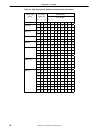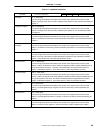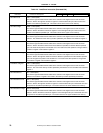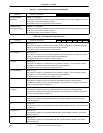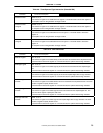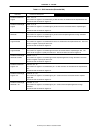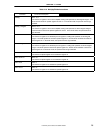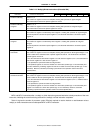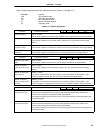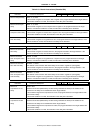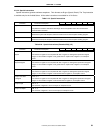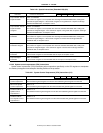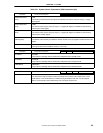
CHAPTER 2 V
R
4120A
76
Preliminary User’s Manual S15543EJ1V0UM
Table 2-13. Multiply/Divide Instructions (Extended ISA)
Instruction Format and Description
Doubleword Multiply DMULT rs, rt
The contents of registers rt and rs are multiplied, treating both operands as signed integers.
The 128-bit result is stored into special registers HI and LO.
Doubleword Multiply
Unsigned
DMULTU rs, rt
The contents of registers rt and rs are multiplied, treating both operands as unsigned integers.
The 128-bit result is stored into special registers HI and LO.
Doubleword Divide DDIV rs, rt
The contents of register rs are divided by that of register rt, treating both operands as signed integers.
The 64-bit quotient is stored into special register LO, and the 64-bit remainder is stored into special
register HI.
Doubleword Divide
Unsigned
DDIVU rs, rt
The contents of register rs are divided by that of register rt, treating both operands as unsigned
integers.
The 64-bit quotient is stored into special register LO, and the 64-bit remainder is stored into special
register HI.
Multiply and Add
Accumulate
MACC{h}{u}{s} rd, rs, rt
The contents of registers rt and rs are multiplied, treating both operands as 32-bit signed integers. The
result is added to the combined value of special registers HI and LO. The 64-bit result is stored into
special registers HI and LO.
If h=0, the same data as that stored in register LO is also stored in register rd; if h=1, the same data as
that stored in register HI is also stored in register rd.
If u is specified, the operand is treated as unsigned data.
If s is specified, registers rs and rd are treated as a 16-bit value (32 bits sign- or zero-extended), and
the value obtained by combining registers HI and LO is treated as a 32-bit value (64 bits sign- or zero-
extended). Moreover, saturation processing is performed for the operation result in the format
specified with u.
Doubleword Multiply
and Add Accumulate
DMACC{h}{u}{s} rd, rs, rt
The contents of registers rt and rs are multiplied, treating both operands as 32-bit signed integers. The
result is added to value of special register LO. The 64-bit result is stored into special register LO.
If h=0, the same data as that stored in register LO is also stored in register rd; if h=1, undefined data is
stored in register rd.
If u is specified, the operand is treated as unsigned data.
If s is specified, registers rs and rd are treated as a 16-bit value (32 bits sign- or zero-extended), and
register LO is treated as a 32-bit value (64 bits sign- or zero-extended). Moreover, saturation
processing is performed for the operation result in the format specified with u.
MFHI and MFLO instructions after a multiply or divide instruction generate interlocks to delay execution of the next
instruction, inhibiting the result from being read until the multiply or divide instruction completes.
Table 2-14 gives the number of processor cycles (PCycles) required to resolve interlock or stall between various
multiply or divide instructions and a subsequent MFHI or MFLO instruction.
op
rs rt
funct
r
d
sa



